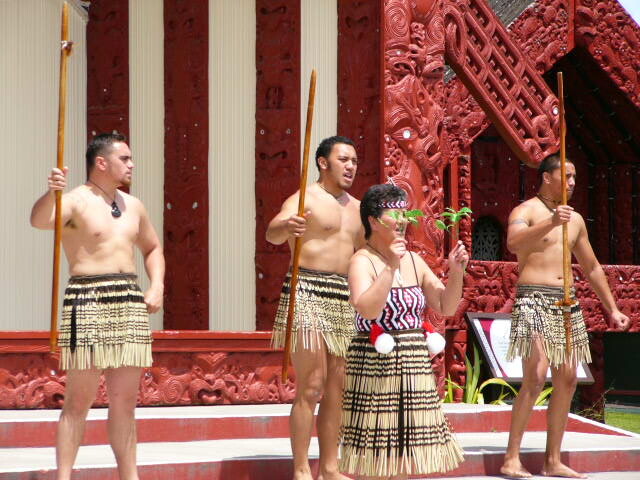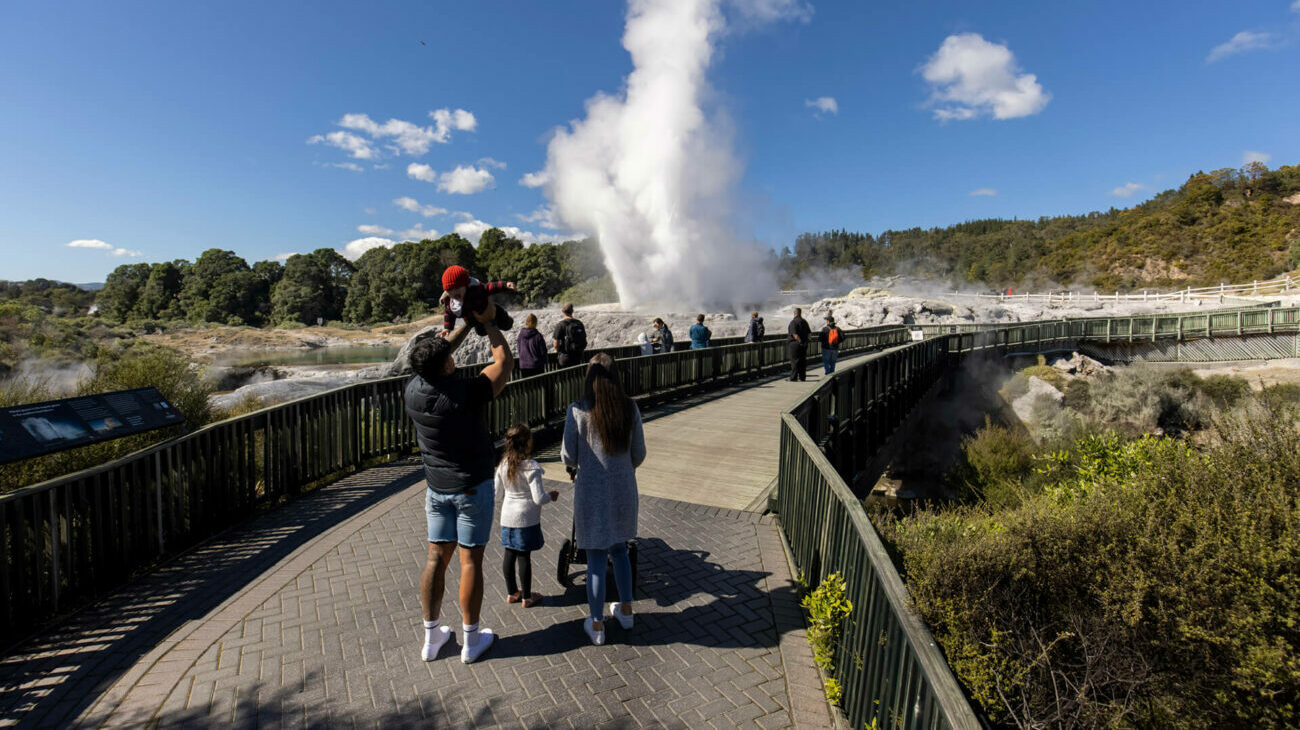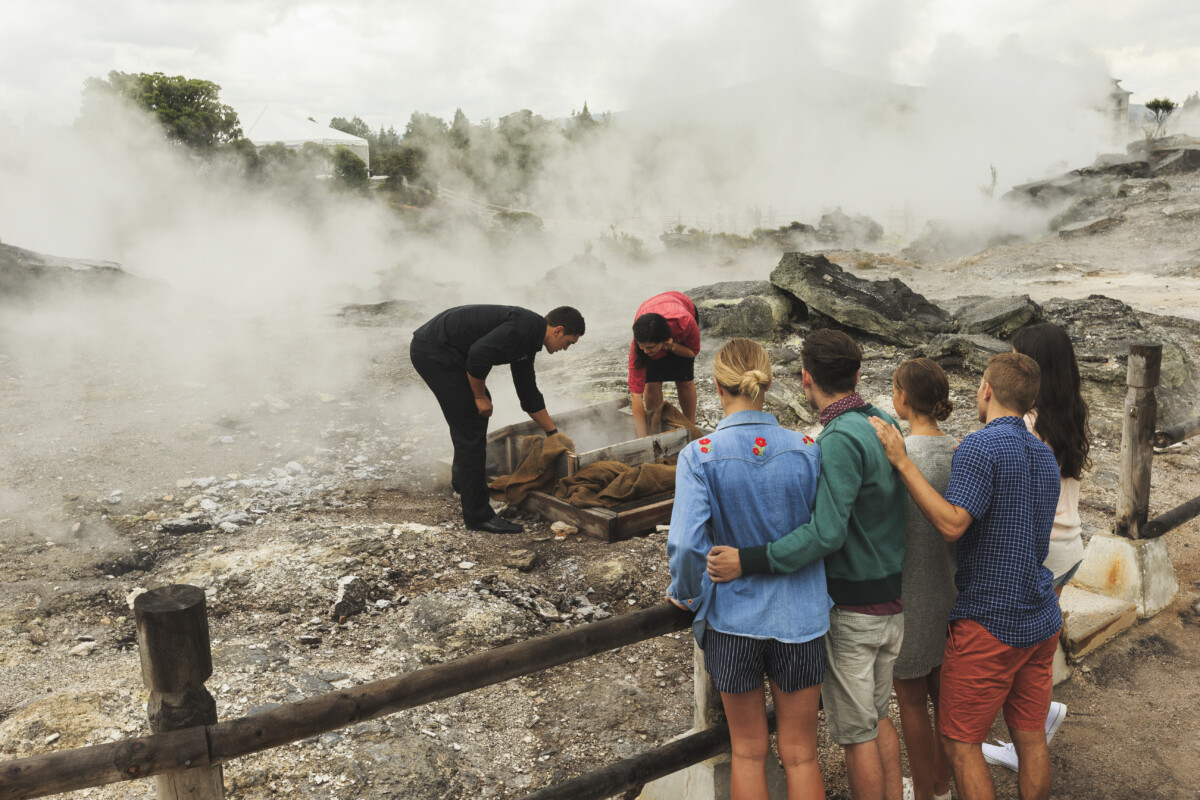Te Puia spans 70 hectares within the historic Te Whakarewarewa Geothermal Valley, on the edge of Rotorua. They are home to the world famous Pōhutu geyser, mud pools, hot springs and silica formations. You will also find the native Kiwi bird and the national schools of wood carving, weaving, stone and bone carving.
Te Puia have shared these taonga (treasures) with manuhiri (visitors) for over 170 years and proudly continue that tradition today.
You will encounter bubbling mud, pools of boiling water still used for cooking, and stunning geysers. The Pōhutu geyser is the star of the show.
The kiwi is a nocturnal flightless bird and New Zealand’s national icon. At Te Puia you can see live kiwi close up and learn how we protect these extraordinary endangered birds. As you wander through our lush native bush you can learn how we use native plants for food, medicine, and handcrafts.
Māori architecture tells our stories and displays our artistry. The Rotowhio marae is a stunning example of traditional Māori architecture, while Heketanga-ā-Rangi is an exciting contemporary structure. See the site of the ancient Te Puia pā (fortified village) and, at Pikirangi village, find out how we lived hundreds of years ago.
Since our ancestors migrated here from Polynesia, people have played a central role in our culture. When someone visits, you are expected to show hospitality and respect. At Te Puia, it’s part of our culture to welcome, guide, feed and entertain you, and treat you like part of the family.
Te Puia houses the New Zealand Māori Arts and Crafts Institute, established in the 1920s to foster all aspects of Māori culture. At Te Puia, national schools of carving, weaving and other traditional arts train talented students from around New Zealand under the guidance of master craftspersons.











